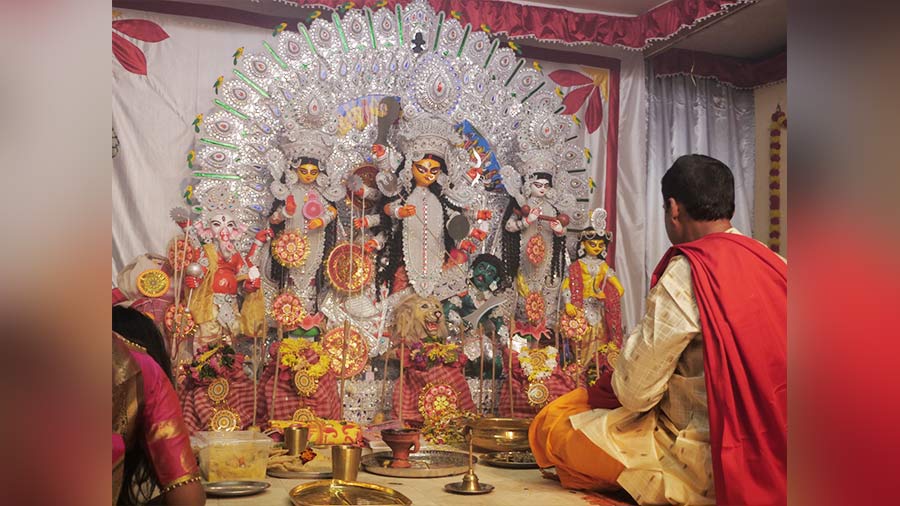For the members of Durgaville – a group of Bengali professionals and students settled in the city of Erlangen in Germany, Durga Puja is a blend of the homeliness of a bonedi barir pujo, adda at Maddox Square and the craftsmanship of Kumartuli. In fact, the idol itself is made by one of the founding members of Durgaville.
This year marked the third edition of the pujo and witnessed a footfall of around 2,200 visitors at Hauptstraße 12, 91088 Bubenreuth. With the hope of bringing Kolkata-like pujo to those living miles away, Durgaville has been striving since 2021 to create an “authentic” Pujo experience.
A place for students
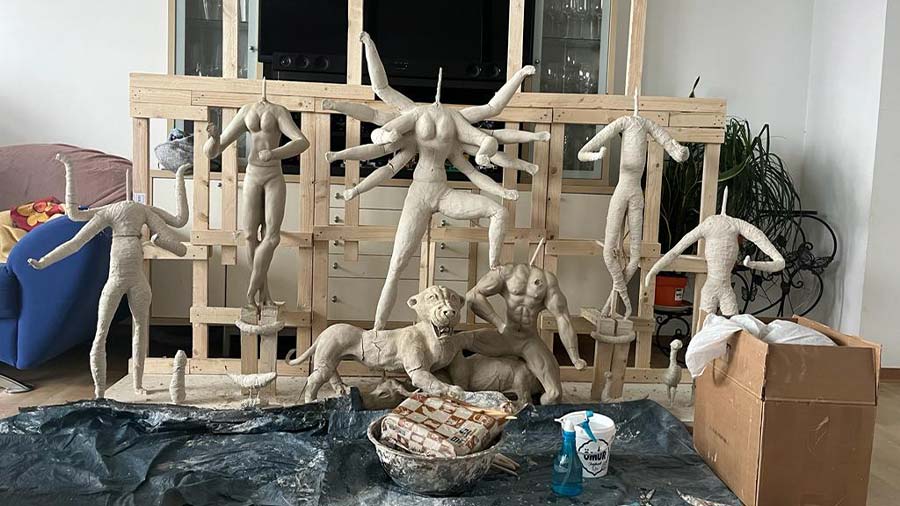
The idol-making in progress
Founded in 2021 by three Bengali families, the focus of Durgaville was to provide the large number of Bengali students at Friedrich-Alexander-Universität (Erlangen-Nürnberg) a chance to enjoy Pujo. Dipankar Sarkar, a tech professional and one of the founding members, said since he had enjoyed his student life in Kolkata, he could empathise with the students who had to leave Kolkata right before Pujo.
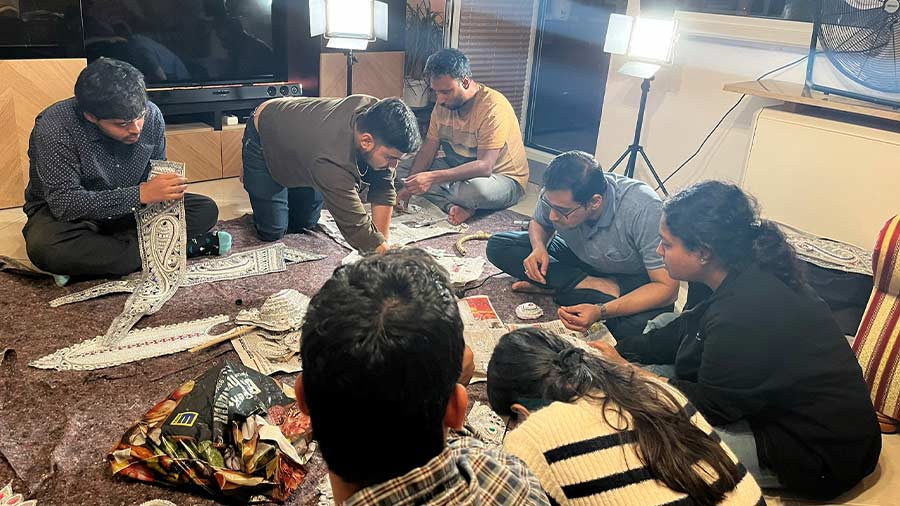
Students and members come together to make the Pujo a success
“I had enjoyed my student life in Kolkata, allowing me to understand the students’ emotions well. Friedrich-Alexander-Universität Erlangen-Nürnberg, one of the largest universities in Germany, has many Bengali students. In 2021, we began Durgaville with the main intention of including everyone, especially students. This was because the academic semesters here begin just before Pujo, and I understood how much they missed the Pujo back home. Since I empathised with this sentiment, I wanted to do something for the students. Two other families (Somenath and Puja Rakshit and Arijit and Gargi Bhattacharyya) joined my wife Payel and me,” Sarkar said.
Students who take charge of a majority of the activities such as handling Durgaville’s media outreach, decorating the hall rented for pujo and even making sure that the idol reaches the venue in one piece. From volunteers who used to work under the direction of the three founding families, they have now grown into decision-makers, trying to predict the footfall each year while ensuring that the guests are always attended to.
A labour of love
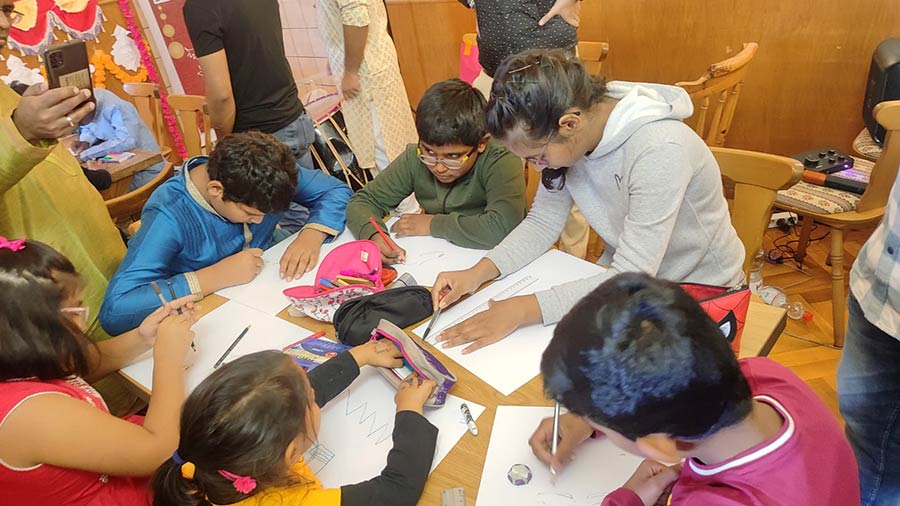
Activities such as sit-and-draw competitions keep the children occupied after the evening ‘arati’
What sets the pujo by Durgaville apart is the fact that their idol is made from scratch by Sarkar. Deviating from the common practice of ordering the idol from India, Sarkar, who had nurtured a passion for idol-making since childhood, attempted to make one on his own. But it isn’t just passion that drove him to make the idol but also economic constraints. When Durgaville was founded in 2021, it was entirely funded by the three families and bringing the idol from India was a cost that they were hard-pressed to bear.
The first idol was made in 2021 and reused in 2022. This year, Sarkar undertook the mammoth task of making the idol yet again. From acquiring the hay required for making the frame to getting the idol’s saaj or dresses specifically ordered made from Kolkata, Sarkar had been busy since June when the kathamo pujo was held on the day of Rath Yatra.
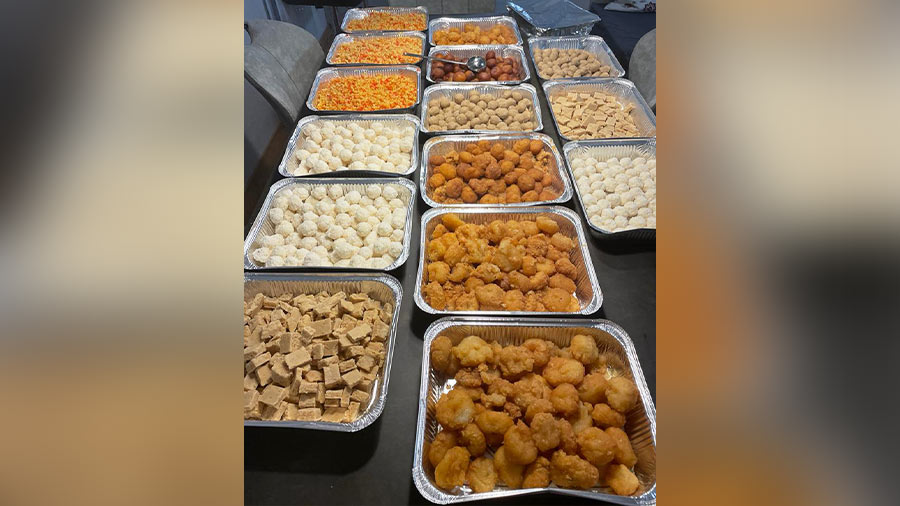
Sweets such as ‘balushai’, ‘laddu’, ‘sondesh’, ‘bonde’ and even ‘nimki’ are made by hand
“I wanted to make the idols in the sabeki style, starting with a 3-foot one in our first year and progressing to a 7-foot idol this year. Initially, it was challenging to find the right materials, especially the hay needed for the frame. This year, we improved by sourcing 60cm hay from local farmers in Erlangen. We also secured five types of mud and brought some from Kolkata. We also bought some things online in Germany. Since my in-laws’ family hosts Kali Puja every year, they know of craftsmen who make the goddess’s saaj or dress. When I ordered the saaj, I had a rough estimate in mind but surprisingly they fit perfectly when they arrived,” he said.
The final touches to the idol are added on Mahalaya with chokkhu daan (offering eyes to the goddess). On this day, Sarkar paints the eyes with the Mahalaya Chandipath by Birendra Krishna Bhadra playing in the background. Then onwards, the Durgaville community of 50-60 Bengalis gear up for Pujo.
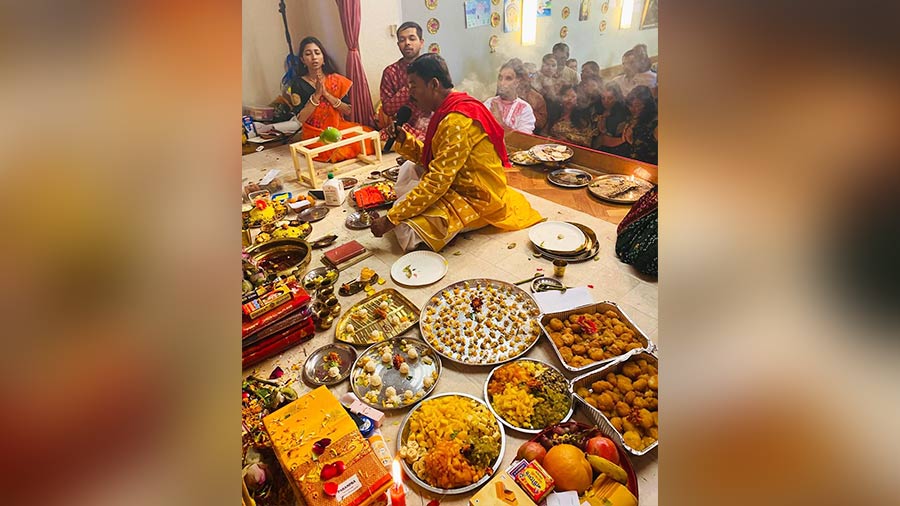
The Pujo being performed by the ‘purohit’ Parimal Chakraborty
The purohit (priest), Parimal Chakraborty, comes from Kolkata each year and Sarkar admits that much of the success of the pujo could be attributed to the way Chakraborty conducts it. A lot of people, Germans and other Europeans included, like to come and watch the arati in the evenings. Some of Sarkar's friends vouch that the way Chakraborty chants the mantras gives them goosebumps. “We want people to feel like they are in a temple or a bonedi bari enjoying the pujo. We also want them to have fun and catch up with each other,” said Sarkar.
‘Bhuri bhoj’ is a must
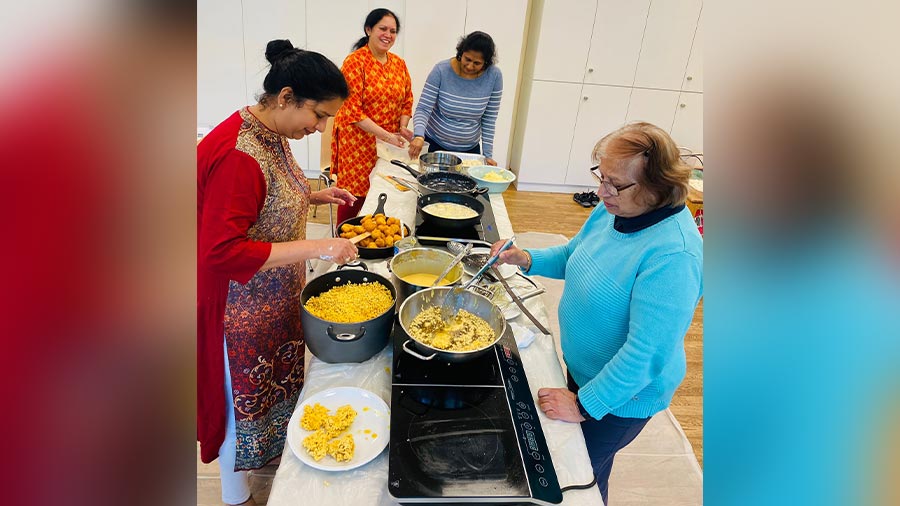
The members cook and arrange for the ‘bhog’ by themselves
The members of Durgaville pride themselves in offering all visitors bhog at no charge. The food is prepared by the members, with some students assisting. Even non-Bengali members of the Indian community in Erlangen volunteer to help in the cooking. Sweets such as balushai, laddu, sondesh, bonde and savoury nimki are made by hand. The bhog is offered from Sashthi to Navami. Dashami’s specialty is dodhikarma (flattened rice, curd, milk, and batasha all mixed together).
“This year, our phuchka stall generated a lot of revenue. We sold phuchka at a very subsidised rate, with the money going towards the pujo. It was a gimmick but a huge success, to the point where it seemed like people came to visit the pujo just for the phuchka,” said Sarkar.

Dashami’s ‘sindoor khela’
Events such as sari-wearing, candle-lighting and sit-and-draw competitions kept the members engaged after the evening arati. Dashami saw the women enjoy sindoor khela in the morning and participate in dhunuchi naach and bhashan naach in the evening.
A formal cultural event was held after the pujo as part of Bijoya Sammilani, where both students and members participated enthusiastically.
So what happens to the idol? “We don’t immerse the idols. The first idol I made (in 2021) was kept at Gargi and Arijit Bhattacharya’s place. I would sometimes feel the urge to go and take a look at the idol. This year I brought the idol to my home. It's not possible to make the idol every year, so we need to find a way to store this year’s idol. I am also making the Kali idol this year and the students have also requested that I make a Saraswati idol,” Sarkar said.
